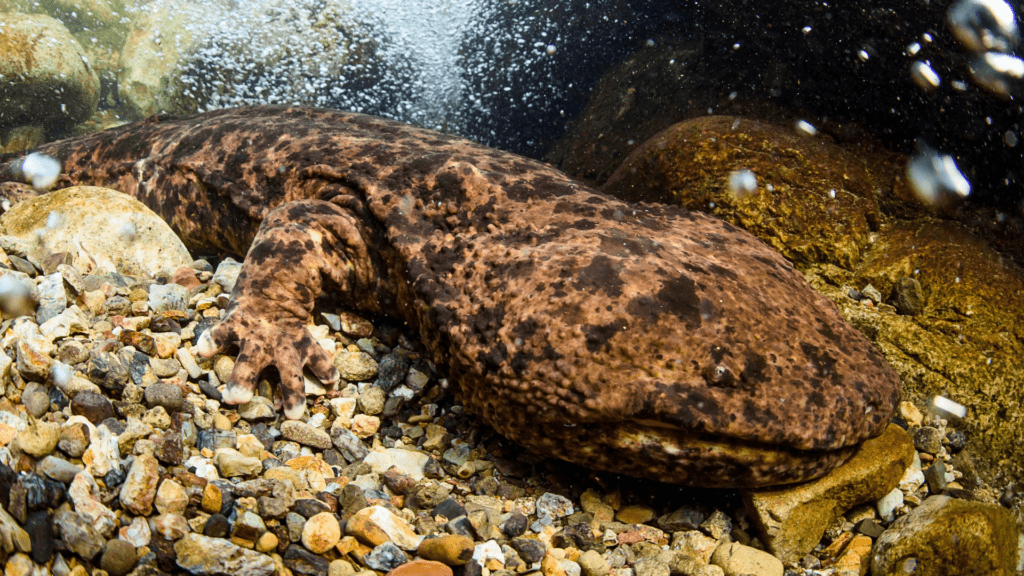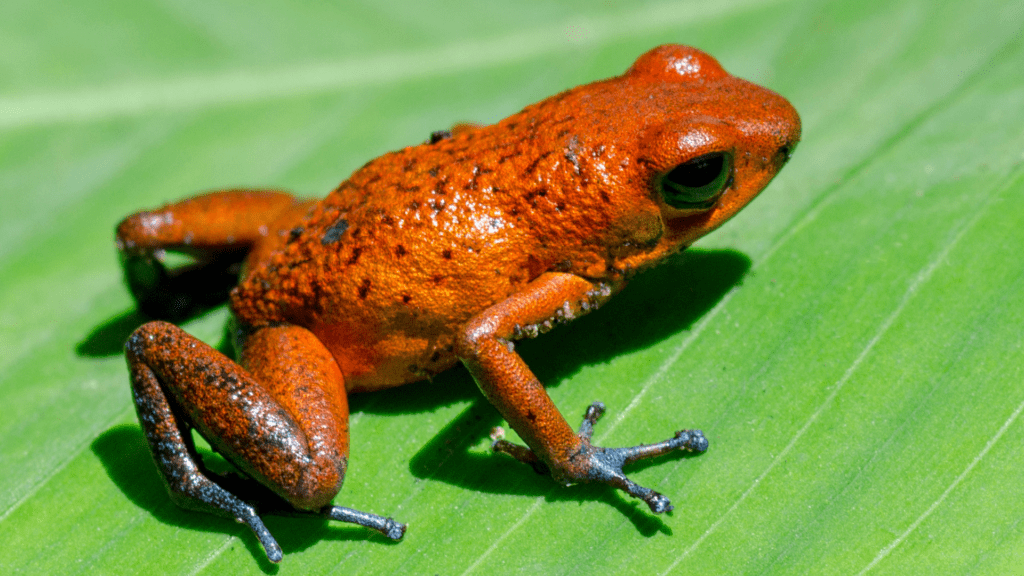The Spotted Salamander (Ambystoma maculatum), also referred to as the Yellow Spotted Salamander, is a fascinating forest-dwelling amphibian native to North America. This secretive creature owes its name to the striking yellow or orange spots adorning its dark body.
Physical Description: How Do Spotted Salamanders Look?
- Size: Adults grow to a length of 15–25 cm (5.9–9.8 inches).
- Weight: Their average weight is around 12.84 grams.
- Body and Skin: The salamander’s smooth, glossy skin complements its stout body, with a facial resemblance to geckos. They have wide snouts and 12 costal grooves running along both sides of their abdomen.
- Color and Spots: While the base body color is predominantly black, some individuals exhibit hues of dark gray, green, brown, or bluish-black. Two irregular rows of yellowish-orange spots stretch from the head to the tail, with brighter spots near the head. Their undersides feature a mix of pink and slate-gray shades.
- Legs and Feet: Equipped with strong limbs, they have four toes on their front feet and five toes on their hind feet.
- Tail: A prominent tail capable of regeneration distinguishes this salamander, allowing it to survive predator attacks.
Lifespan
In favorable conditions, wild Spotted Salamanders can live up to 20 years, showcasing their remarkable longevity among amphibians.
Distribution and Habitat
- Geographical Range: Found widely across eastern North America, their range extends from Nova Scotia to southern Georgia and Texas.
- Preferred Habitat: They favor moist forests with dense ground cover, thriving under logs, rocks, or inside abandoned burrows. These hiding spots help them retain moisture, a critical factor for their survival. Without adequate humidity, their skin would dry out, leading to fatal dehydration.
Behavioral Characteristics
- Nocturnal Lifestyle: Spotted Salamanders are most active at night, venturing out to forage under the cover of darkness.
- Limited Movement: These amphibians usually remain within 100 meters of their breeding pond, rarely exceeding 250 meters.
- Burrow Use: Though not expert diggers, they skillfully adapt or enlarge existing burrows for shelter.
- Climate Sensitivity: Extreme weather—whether too dry, cold, or warm—forces them to retreat deeper into their burrows.
When threatened, larvae instinctively hide in the debris at pond bottoms. Interestingly, adult salamanders exhibit a homing instinct, returning to their exact breeding ponds—even retracing their original paths despite significant distances.
Reproduction and Life Cycle
Spotted Salamanders breed during March and April, following heavy rains and warmer temperatures.
- Egg Laying: Females deposit 200 eggs in jelly-like clusters attached to underwater vegetation. These clusters contain symbiotic algae that help sustain the developing embryos.
- Larvae Stage: Hatching occurs after 4–8 weeks, depending on water temperature. The larvae, resembling tadpoles, possess feathery gills and are ½ inch long at birth.
- Juvenile Transformation: Over 2–4 months, the larvae undergo metamorphosis, transitioning into terrestrial juveniles about 2½ inches in size.
Cannibalism is observed among larvae during food shortages, underscoring their competitive survival strategies.
Adaptations
Spotted Salamanders boast extraordinary survival traits:
- Tail Autotomy: They can detach their tails to distract predators and regenerate them later.
- Regeneration Ability: Beyond tails, these amphibians can regrow damaged limbs, parts of their brain, and even internal organs.
Diet:
As carnivores, Spotted Salamanders rely on a diverse diet that includes insects like centipedes, millipedes, crickets, worms, spiders, and slugs. They use their sticky tongues to capture prey efficiently.
Predators and Defense Mechanisms
- Common Predators: Their natural enemies include snakes, skunks, raccoons, turtles, chipmunks, squirrels, and opossums.
- Defense: To deter predators, Spotted Salamanders secrete a toxic white substance from glands near their necks and tails.
Conservation Status
The IUCN classifies the Spotted Salamander as a species of Least Concern (LC) due to stable population levels. However, habitat destruction, increasing water acidity, and the pet trade are significant threats.
Interesting Facts
- Ecological Sensitivity: Rising acidity levels in breeding ponds adversely affect their reproduction rates.
- Cannibalistic Behavior: Larvae often consume each other when food resources are scarce.
- High Juvenile Mortality: Over 90% of larvae fail to reach adulthood due to predation, disease, or drying ponds.
- Navigation Skills: Their ability to locate their breeding ponds with precision is unparalleled among amphibians.
faq’s
1. What is a Spotted Salamander?
The Spotted Salamander is a large, nocturnal amphibian belonging to the mole salamander family. It is easily recognized by its black or dark blue body with bright yellow or orange spots.
2. How big do Spotted Salamanders get?
They typically grow to 6 to 9 inches (15 to 23 cm) in length, making them one of the larger salamander species in North America.
3. What do Spotted Salamanders look like?
They have:
A smooth, shiny black or dark blue body
Bright yellow or orange spots on their back and tail
A wide, rounded snout
12 costal grooves (vertical grooves along their sides)
4. Where do Spotted Salamanders live?
Spotted Salamanders are found in deciduous forests and wooded areas across the eastern United States and parts of Canada. They prefer moist environments near vernal pools (temporary ponds) for breeding.
5. What do Spotted Salamanders eat?
They are carnivorous and feed on:
Insects
Worms
Slugs
Spiders
Small crustaceans
6. Are Spotted Salamanders poisonous?
Yes, they secrete a mild toxin from their skin to deter predators. This toxin is not harmful to humans but can irritate the eyes or mouth if handled.
7. What is the lifespan of a Spotted Salamander?
In the wild, they can live for up to 20 years, though their average lifespan is around 10 to 15 years.
8. How do Spotted Salamanders reproduce?
Breeding occurs in early spring, often during rainy nights. They migrate to vernal pools, where females lay 100 to 300 eggs in gelatinous masses attached to underwater vegetation. The eggs hatch into larvae, which metamorphose into adults within 2 to 4 months.
9. Do Spotted Salamanders have any predators?
Yes, their predators include:
Snakes
Birds
Small mammals
Larger amphibians
10. Are Spotted Salamanders endangered?
No, they are currently listed as Least Concern by the IUCN. However, habitat destruction and pollution threaten local populations.
11. Why are Spotted Salamanders important to
the ecosystem?
They play a vital role in controlling insect populations and serve as both predator and prey in their ecosystems.
12. Can Spotted Salamanders be kept as pets?
Yes, but they require specific care, including:
A moist, cool environment
A diet of live insects and worms
Proper handling to avoid stress
13. What is unique about Spotted Salamander eggs?
Their eggs have a symbiotic relationship with green algae (Oophila amblystomatis), which provides oxygen to the developing embryos.
14. How do Spotted Salamanders defend themselves?
They rely on:
Their toxic skin secretions
Camouflage (their dark color helps them blend into the forest floor)
Burrowing into the soil to avoid predators
15. What is the biggest threat to Spotted Salamanders?
The biggest threats are habitat destruction (e.g., deforestation, urbanization) and climate change, which can dry up their breeding pools.

